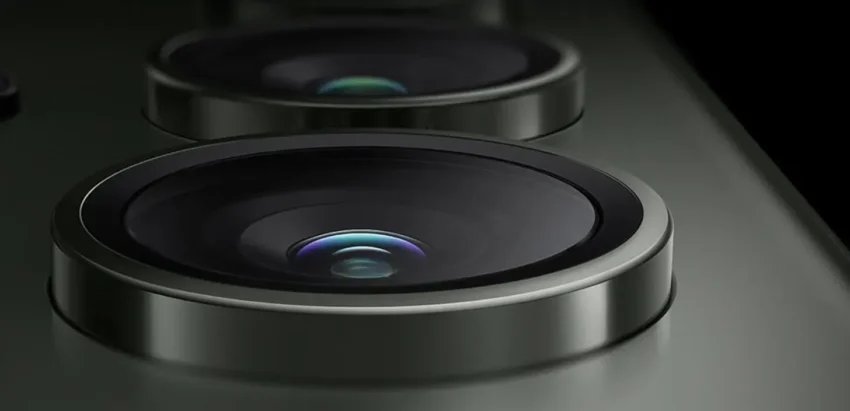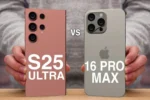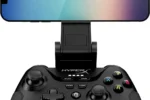In the world of smartphone photography, the Galaxy S25 Ultra camera comparison is highly anticipated, especially among tech enthusiasts and photography lovers alike. Following its recent launch, this flagship phone is already making waves, and many are eager to see how its camera features stack up against its predecessor, the Galaxy S24 Ultra. With a 200MP main camera and a suite of advanced lenses, the Galaxy S25 Ultra aims to redefine what users can expect from smartphone photography. This camera shootout will not only highlight the differences in image quality but also showcase the enhancements Samsung has integrated into its latest model. As we dive into this comparison, we will uncover whether the Galaxy S25 Ultra truly lives up to the hype or if the Galaxy S24 Ultra still holds its own in this competitive landscape.
Exploring the latest in mobile photography, we turn our attention to the Galaxy S25 Ultra versus its predecessor, the Galaxy S24 Ultra. This comparison focuses on the camera capabilities of these two Samsung Galaxy models, scrutinizing their performance in various shooting scenarios. With the evolution of smartphone cameras, understanding the nuances of their features is essential for users looking to capture stunning images. In this evaluation, we will delve into the specifics of each device’s camera setup, analyzing everything from dynamic range to macro capabilities. Join us as we navigate through this photography battle, revealing which smartphone reigns supreme in the realm of high-resolution imaging.
Galaxy S25 Ultra Camera Features Overview
The Galaxy S25 Ultra boasts an impressive camera setup that includes a 200MP main camera, a 50MP ultrawide lens, two telephoto cameras at 10MP and 50MP for 3x and 5x zoom, respectively, and a 12MP front-facing camera. This comprehensive array of lenses positions the Galaxy S25 Ultra as a front-runner in the smartphone photography realm. With such a robust configuration, it aims to cater to both casual users and photography enthusiasts alike, providing a versatile shooting experience that covers various scenarios from wide landscapes to detailed macro shots.
In contrast, the Galaxy S24 Ultra features a slightly less sophisticated camera system with a similar 200MP main camera and a 12MP ultrawide lens. It also includes two telephoto lenses, but with different specifications. The S24 Ultra’s camera has proven to be formidable, yet the enhancements in the S25 Ultra’s ultrawide lens and macro capabilities suggest that Samsung is making strides towards elevating the photography potential of its flagship devices. This evolution in camera features not only reflects Samsung’s commitment to innovation but also raises expectations for future models in the Galaxy series.
Galaxy S25 Ultra vs. Galaxy S24 Ultra Camera Comparison
In the highly anticipated camera comparison between the Galaxy S25 Ultra and the Galaxy S24 Ultra, both devices deliver impressive results, but the differences are often nuanced. The S25 Ultra’s main camera offers a slight increase in contrast, yet the overall image quality between the two remains remarkably close. Users looking for definitive advantages may find it challenging to choose a clear winner in this camera shootout, as many images exhibit similar levels of detail, sharpness, and color reproduction.
However, the S25 Ultra does stand out in certain categories, particularly with its macro capabilities leveraging the upgraded 50MP ultrawide lens. While the S24 Ultra produced commendable shots, the S25 Ultra captures more intricate details in close-up photography, showcasing the advancements in Samsung’s imaging technology. This level of detail could appeal to users who prioritize smartphone photography, especially in scenarios where capturing fine textures and elements is crucial.
Dynamic Range and Color Performance in Smartphone Photography
One of the critical aspects of smartphone photography is dynamic range, which refers to the camera’s ability to capture detail in both the shadows and highlights of a scene. In this regard, the Galaxy S24 Ultra surprisingly outperforms the S25 Ultra, as it tends to lift shadow details more effectively. This could be attributed to the image processing algorithms that Samsung employs, which might evolve with future software updates, potentially enhancing the S25 Ultra’s capabilities.
Color performance is another area where both devices exhibit strengths and weaknesses. The S24 Ultra has been noted to produce more saturated reds in flower shots, while other colors remain comparable. This subtle distinction can be significant for users who have specific preferences for color accuracy in their photography. Ultimately, the choice between the two may come down to personal taste and the types of photography one engages in most frequently.
Low Light Performance: Galaxy S25 Ultra’s Advantage
Low light photography is often a true test of a smartphone’s camera capabilities, and here, the Galaxy S25 Ultra showcases a clear advantage over its predecessor. With advancements in its imaging software, the S25 Ultra captures more detail in dim environments, making it an ideal choice for night-time photography. Users will appreciate the improved clarity and exposure in low-light conditions, which are vital for capturing memorable moments without compromising on quality.
The ability of the Galaxy S25 Ultra to perform well in low light settings not only enhances the user experience but also underscores Samsung’s focus on refining its smartphone camera technology. The S24 Ultra, while still competent, doesn’t quite match the S25 Ultra’s performance in challenging lighting conditions. This improvement aligns with current trends in smartphone photography, where users increasingly seek devices capable of delivering impressive results regardless of the time of day.
Selfie Cameras: A Close Call
When it comes to selfies, both the Galaxy S25 Ultra and S24 Ultra equip users with a 12MP front-facing camera that captures high-quality images. In bright sunlight, both devices perform admirably, showcasing excellent detail and clarity in facial features. However, the S24 Ultra has a slight edge in exposure, which could appeal to users who prefer a brighter look in their selfies.
Ultimately, the choice between the two might boil down to personal preference in skin tone and brightness levels in selfies. Both devices exemplify Samsung’s commitment to delivering superior smartphone photography experiences, making them appealing options for users who prioritize capturing great self-portraits. The competition between these two flagship models highlights the ongoing evolution of smartphone cameras, especially in the realm of selfie capabilities.
The Importance of Ultrawide Cameras in Modern Smartphones
Ultrawide cameras have become an essential feature in modern smartphones, and the Galaxy S25 Ultra’s upgraded 50MP ultrawide lens exemplifies this trend. The wider field of view allows users to capture expansive landscapes and group shots without sacrificing detail. This feature is particularly beneficial for photographers who enjoy exploring scenic locations or capturing special moments with friends and family.
In comparison, the S24 Ultra’s 12MP ultrawide camera still offers a solid performance, though it lacks some of the detail found in the S25 Ultra’s shots. The differences in image quality could influence a buyer’s decision, especially for those who frequently utilize ultrawide shots in their photography. As smartphone photography continues to evolve, the ultrawide camera remains a crucial component for enhancing creative expression.
Exploring Telephoto Capabilities in Smartphone Photography
Telephoto lenses are vital for users who want to capture distant subjects without losing detail, and both the Galaxy S25 Ultra and S24 Ultra excel in this area. With a 10MP telephoto lens offering 3x zoom and a 50MP lens for 5x zoom, the S25 Ultra provides versatility that caters to various shooting scenarios. The new AI-enhanced ProVisual Engine in the S25 Ultra also aims to improve the quality of zoomed-in shots, which could be a significant draw for photography enthusiasts.
On the other hand, while the S24 Ultra’s telephoto capabilities are commendable, they do not quite match the enhancements seen in the S25 Ultra. Users who frequently engage in photography that requires zoom capabilities may find the improvements in the S25 Ultra’s telephoto performance compelling enough to justify an upgrade. This focus on telephoto advancements underscores Samsung’s commitment to meeting the diverse needs of smartphone photographers.
The Verdict: Galaxy S25 Ultra vs. Galaxy S24 Ultra
In conclusion, while the Galaxy S25 Ultra technically outperforms the S24 Ultra in several areas—most notably in macro and low light photography—the overall differences between the two devices are not as pronounced as one might expect. The improvements in camera technology, such as the enhanced ultrawide and telephoto capabilities, suggest that the S25 Ultra is well-equipped for a variety of photography needs. However, for those who already own the S24 Ultra, the incremental upgrades may not warrant an immediate switch.
As the competition in the smartphone market intensifies, Samsung’s latest offerings continue to push the envelope in smartphone photography. Users can look forward to future software updates that may further enhance the camera capabilities of both devices. Ultimately, the decision to upgrade will depend on individual preferences and photography habits, as both the Galaxy S25 Ultra and S24 Ultra offer compelling camera features that cater to a wide range of users.
Frequently Asked Questions
What are the key differences in camera features between the Galaxy S25 Ultra and Galaxy S24 Ultra?
The Galaxy S25 Ultra features a 200MP main camera, 50MP ultrawide, 10MP 3x telephoto, and 50MP 5x telephoto, while the Galaxy S24 Ultra has a 200MP main, 12MP ultrawide, 10MP 3x telephoto, and 50MP 5x telephoto. The main difference lies in the ultrawide camera, which has been upgraded in the S25 Ultra.
How does the Galaxy S25 Ultra perform in low light compared to the Galaxy S24 Ultra?
In low light conditions, the Galaxy S25 Ultra shows improved performance, capturing slightly more detail than the Galaxy S24 Ultra. The new AI-enhanced ProVisual Engine helps optimize images for better clarity in darker settings.
Which smartphone is better for macro photography, the Galaxy S25 Ultra or Galaxy S24 Ultra?
The Galaxy S25 Ultra excels in macro photography due to its 50MP ultrawide camera, which captures more detail and clarity compared to the Galaxy S24 Ultra’s 12MP ultrawide. This results in sharper and more vivid macro shots.
In a camera shootout, how does the Galaxy S25 Ultra’s portrait mode compare to the Galaxy S24 Ultra?
Both the Galaxy S25 Ultra and Galaxy S24 Ultra produce high-quality portrait shots with rich detail. However, the S25 Ultra exhibits more aggressive background blur, while the overall quality remains similar.
Are the color reproduction capabilities of the Galaxy S25 Ultra significantly better than those of the Galaxy S24 Ultra?
The color reproduction between the Galaxy S25 Ultra and Galaxy S24 Ultra is very similar, with only minor differences noted. In some cases, the S24 Ultra shows slightly more saturated colors, making it difficult to declare a clear winner in this category.
What advantages does the Galaxy S25 Ultra offer for zoom photography compared to the Galaxy S24 Ultra?
While the Galaxy S25 Ultra shows minimal differences at 3x and 5x zoom, it begins to outperform the Galaxy S24 Ultra at 10x zoom, delivering clearer and more detailed images, thanks to its new AI-enhanced ProVisual Engine.
How does the dynamic range of the Galaxy S25 Ultra compare to that of the Galaxy S24 Ultra?
The Galaxy S24 Ultra slightly outperforms the S25 Ultra in dynamic range, as it manages to bring out more detail in shadowed areas. This could change with software updates, but currently, the S24 Ultra has the edge.
Which smartphone is better for ultrawide photography, the Galaxy S25 Ultra or Galaxy S24 Ultra?
While the Galaxy S25 Ultra has a higher resolution 50MP ultrawide camera, the differences in image quality are minimal compared to the Galaxy S24 Ultra. Both cameras produce similar results, making it a tie in ultrawide photography.
What is the overall conclusion of the camera comparison between the Galaxy S25 Ultra and Galaxy S24 Ultra?
The Galaxy S25 Ultra is a worthy upgrade with notable improvements in macro, low light, and zoom photography. However, many features remain similar to the Galaxy S24 Ultra, particularly in main camera performance, leading to a less dramatic difference than anticipated.
How do the selfie cameras of the Galaxy S25 Ultra and Galaxy S24 Ultra compare?
Both smartphones feature 12MP selfie cameras that capture excellent detail. The differences are subtle, often boiling down to personal preference in color exposure, making it difficult to declare a definitive winner.
| Feature | Galaxy S25 Ultra | Galaxy S24 Ultra | Winner |
|---|---|---|---|
| Main Camera | 200MP, slight increase in contrast | 200MP, similar performance | Tie |
| Ultrawide Camera | 50MP, warmer colors | 12MP, cooler colors | Tie |
| Dynamic Range | Slightly more contrast | Better shadow detail | Galaxy S24 Ultra |
| Colors | Similar, minor differences | Similar, minor differences | Tie |
| Macro | 50MP, more detail | 12MP, less detail | Galaxy S25 Ultra |
| Selfie | 12MP, slightly less exposure | 12MP, slightly more exposure | Tie |
| Portrait | More aggressive blur | Less aggressive blur | Tie |
| Zoom | Better at 10x zoom | Good but less clarity | Galaxy S25 Ultra |
| Panorama | Identical quality | Identical quality | Tie |
| Low Light | Slightly better detail | Good low light performance | Galaxy S25 Ultra |
Summary
The Galaxy S25 Ultra camera comparison highlights that while the Galaxy S25 Ultra has made some advancements, particularly in macro photography and low light performance, the overall differences from the S24 Ultra are not as pronounced as expected. The main camera remains quite similar, with only marginal improvements noted. The competition continues to intensify, and the S25 Ultra stands as a capable contender, but users looking for dramatic upgrades may find the changes subtle. Regular software updates may still enhance its performance further, making it a device worth keeping an eye on.






